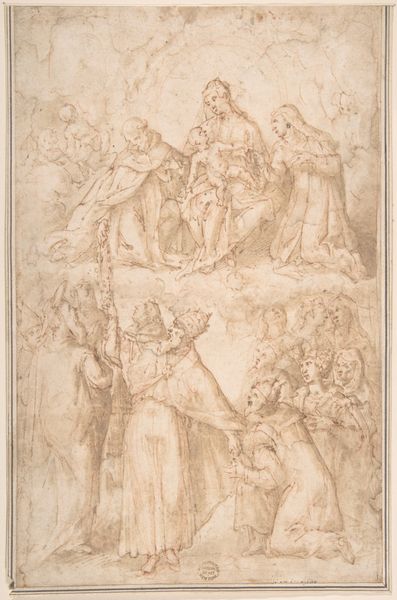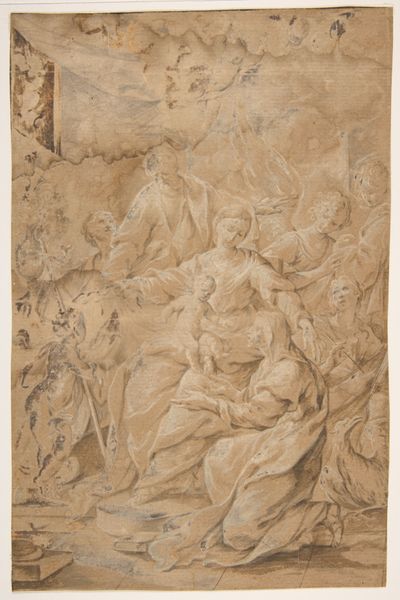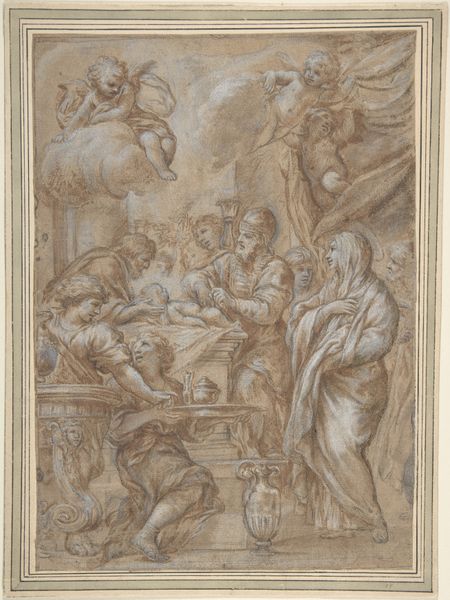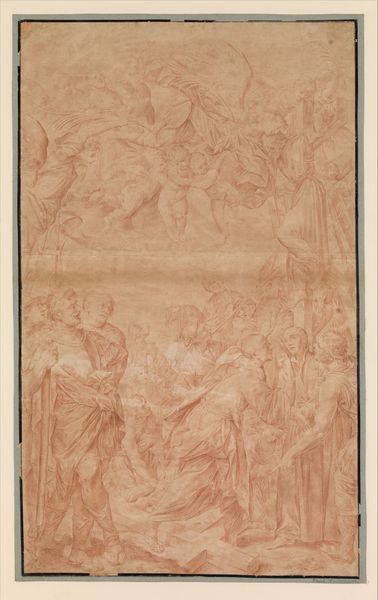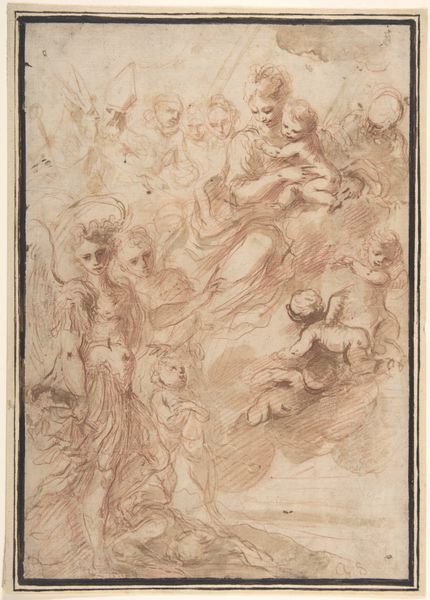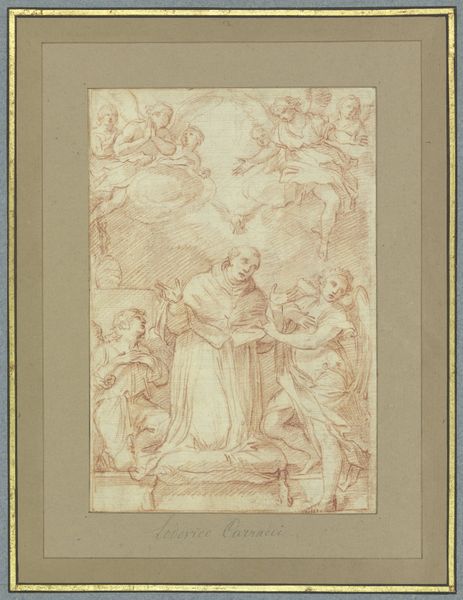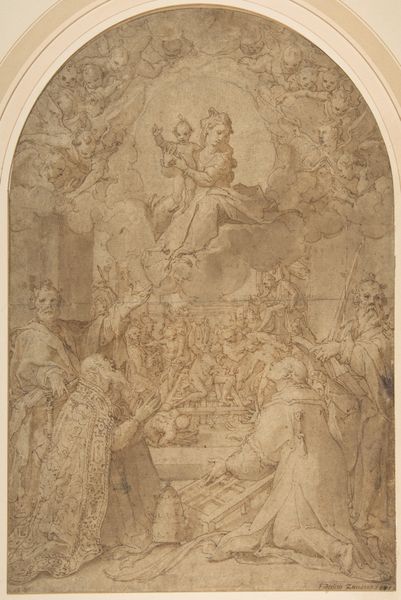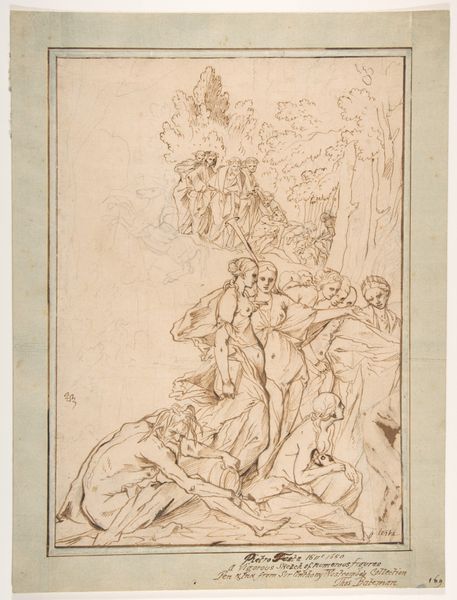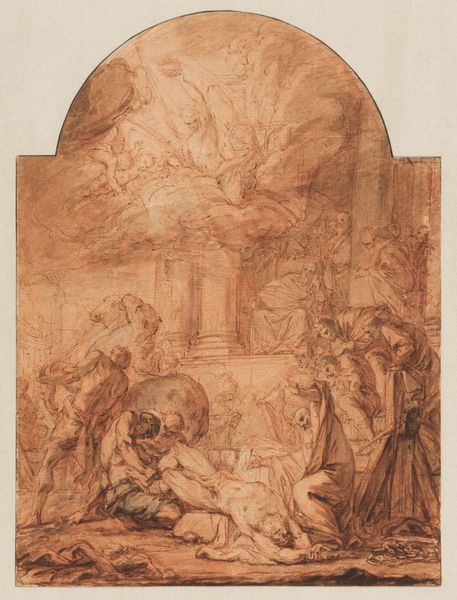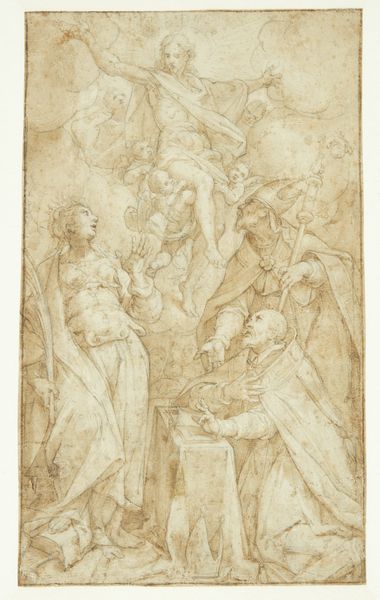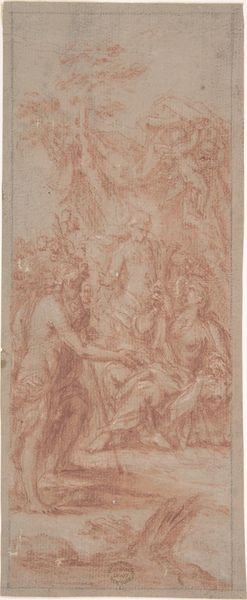
drawing, print
#
drawing
#
baroque
# print
#
figuration
#
history-painting
Dimensions: Sheet: 27 1/2 × 20 1/16 in. (69.8 × 50.9 cm)
Copyright: Public Domain
Editor: This drawing, “Saint Peter Healing the Lame,” was created sometime between 1722 and 1750 by Johann Lorenz Haid. Rendered in sanguine, a reddish chalk, it depicts a scene teeming with figures. The texture created by the drawing is incredible. How do you interpret the historical symbolism and cultural memory embedded within this artwork? Curator: Notice how Haid frames the scene with a flourish of Baroque ornamentation; it mimics a stage set, doesn't it? And consider the emotional impact. Red chalk often suggests urgency, blood, and passion. The choice is potent. Can you feel that energy connecting to something deeper within our collective psyche? Editor: Absolutely, the red chalk really grabs your attention and makes the miraculous scene almost…earthly? How might the scene speak to broader historical or cultural themes beyond the immediate biblical narrative? Curator: Consider this image within the context of the Counter-Reformation. Visual representations became critical for communicating faith, and Haid's print could have disseminated this story far and wide, visually reinforcing the Church's authority and the power of faith. The symbolic language speaks to the enduring human desire for healing, not just physical, but also spiritual and societal. Editor: It's fascinating how a single color choice can carry so much symbolic weight! What a lesson in seeing beyond the surface to cultural narratives encoded within! Curator: Indeed! By recognizing these visual cues, we tap into a centuries-old conversation, understanding not just what the artist created, but why it resonated then, and, perhaps, why it continues to move us today.
Comments
No comments
Be the first to comment and join the conversation on the ultimate creative platform.
